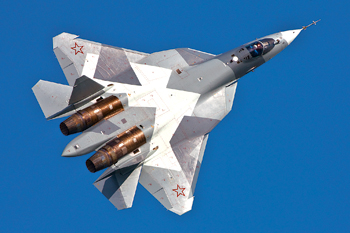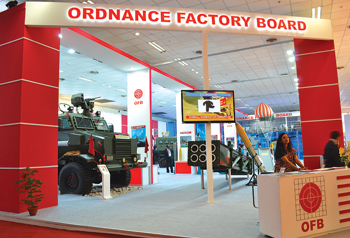INDIAN ARMED FORCES CHIEFS ON
OUR RELENTLESS AND FOCUSED PUBLISHING EFFORTS

SP Guide Publications puts forth a well compiled articulation of issues, pursuits and accomplishments of the Indian Army, over the years

I am confident that SP Guide Publications would continue to inform, inspire and influence.

My compliments to SP Guide Publications for informative and credible reportage on contemporary aerospace issues over the past six decades.
- Prime Minister witnesses 'Bharat Shakti' – a Tri-Services Firing and Manoeuvre Exercise in Pokhran, Rajasthan
- Interim Defence Budget 2024-25 — An Analysis
- Union Defence budget 2024
- Prime Minister Modi Commemorates Indian Navy Day in a Grand Ceremony
- Prime Minister Modi Flies in the LCA Tejas
- New Chapter in India-Italy Defence Ties
- Airpower beyond Boundaries
Defence procurement — bottleneck is DPP

Will the new DPP facilitate FDI in defence, smooth induction of new technology and speed up development?
Prior to Prime Minister embarking on the three-nation trip including France, media had reported that the Rafale deal hinged upon India’s insistence being met about honouring the price as agreed to during the year 2012.
However, agreement has been reached for India to purchase 36 Rafale fighter aircraft that would be flown in. There appeared to be another hiccup, in that, the overall deal was to include large number of this Rafale aircraft to be manufactured in India but apparently only 49 per cent foreign direct investment (FDI) has been offered to France, and the latter were unhappy about it. It is only last year that the Union Cabinet approved FDI in defence beyond 49 per cent on case to case basis, especially where transfer of technology (ToT) and joint ventures are involved. However, now that the 36 Rafale are being imported without ToT, it appears that the overall void of 126 medium multi-role combat aircraft (MMRCA) of the IAF will be made up though Russia’s fifth-generation fighter being developed with Indo-Russian collaboration. But coming to overall defence procurements, inviting foreign investments and absorbing foreign technology, it is the Defence Procurement Procedure (DPP) that continues to remain a bottleneck. This is despite the fact that the DPP has been reviewed annually for the past several years and there has been much fanfare every time a new one was issued. However, the fact remains that there has been no change from importing 70 per cent of our defence requirements that shows the sorry state of research and development, indigenisation and government focus on matters military.

T-50 multirole combat aircraft designed for the air superiority and ground attack functions

Defence Production Policy should provide greater autonomy to the DPSUs and OFB units for their expansion, diversification and enable them to take decisions to improve serviceability of platforms available to the armed forces
Defence Minister Manohar Parrikar having acknowledged on sidelines of Aero India 2015 that ‘Make in India’ for the defence sector required streamlining, has stated that the new procedure is being worked out and will be issued shortly. It is learnt that some people are working on the new DPP as well but it remains to be seen whether the usual in-house Ministry of Defence’s (MoD) superficial tinkering will continue to prevail. Agreeably both the Prime Minister and Defence Minister are open to suggestions but if the integration of outside ideas is left to the MoD bureaucrats, then the outcome may not be much different from the game that has been on by the arms mafia in the past decades, and our armed forces may continue to be starved of shortages and modern technology.
All this while the government acknowledges that 50 per cent of equipment held by our defence forces is obsolete while at the same time the Comptroller and Auditor General of India (CAG) has been pointing out that the 30 per cent of defence equipment is ‘substandard’ and ‘overpriced.’ That this state of affairs has continued despite the meagre defence budget and with joint secretary level officers on all boards of the Defence Research and Development Organisation (DRDO), the DPSUs and OFB has been the continuing irony. The nexus would be obvious; the lure of individual gains sacrificed on the altar of India First.
Not that governments have not used the Defence Minister in the past to fill up party coffers, Defence Minister not being in-charge for defence of the country. That is why A.K. Antony could fraud with the equipping and modernisation of the armed forces. In such a dispensation, to expect the MoD to come up with the required DPP appears out of the question. Unfortunately, the Defence Minister is dependent on the advice of the very same bureaucrats who are part of the mafia, and who have successfully kept the military out of policy making with respect to matters military. The new policy is reportedly expected to outline measured steps instead of outright blacklisting of firms including steps to be taken against offences committed and allow foreign defence firms to legally hire agents.
But then addressing the Consultative Committee attached to MoD recently, Defence Minister Manohar Parrikar had said tha MoD would be bringing about major changes in the DPP and the Defence Production Policy to provide greater autonomy to the DPSUs and OFB units for their expansion, diversification and enable them to take decisions to improve serviceability of platforms available to the armed forces. So if you read between the lines, the stranglehold of the DRDO-DPSUs-OFB will remain and private industry would in all probability continue to operate ‘through’ this nexus even as few odd projects may be thrown to the private industry to show the semblance of fairness. But the fact remains that this is not providing a level playing field. The age-old justification of DRDODPSUs-OFB that what they outsource to private industry, also financially benefits the latter fools no one. There is little hope for improvement if the private industry is not given the lead in indigenous defence production. Unfortunately, we fail to look around what is happening in foreign countries and take the cue.
DRDO will continue to make tall promises and delay modernisation. Take the case of the ‘Naag’ missile for which the DRDO and the Bharat Electronics Limited (BEL) took the Army for a ride for years that BEL would develop matching weapon locating radar (WLR). Eventually, the Army had to put on file that BEL will not be able to do it. That is how the ANTPQ-37 were imported from the US albeit it was 25 years old technology and US had already provisioned these to Pakistan a decade back. What the arms mafia would have pocketed remains secret but yet media fanfare was used to the hilt as if state-ofthe-art technology had been acquired for the forces. Take the Artillery, Command Control and Communication (ACCS) System fielded as the first operational information system in the Indian Army. It is about 95 per cent Israeli though trumpeted as BEL’s achievement.
Our defence sector has remained defunct because we have simply not let the private sector come up. Are we going to overlook that in the past 50 years, our defence industry with DRDO at the apex has not developed a single platform or defence equipment in the laid down time frame? Would this change simply because the Defence Secretary now heads DRDO or will it go worse? The question also is that are we looking at defence equipment ‘through’ DRDO-DPSUs-OFB or is there parallel opening to the private sector? Will the new DPP facilitate FDI in defence, smooth induction of new technology and speed up development?
Logically, chalking out the new DPP should have been given to an independent body, like a non-government aided think tank, with members from the MoD, military, DRDO-DPSUs-OFB, private industry and scholars. It would not have taken more than three months to come out with an ideal DPP free from the pressures of the mafia. But with that not happening, let us wait and hope for the best.





